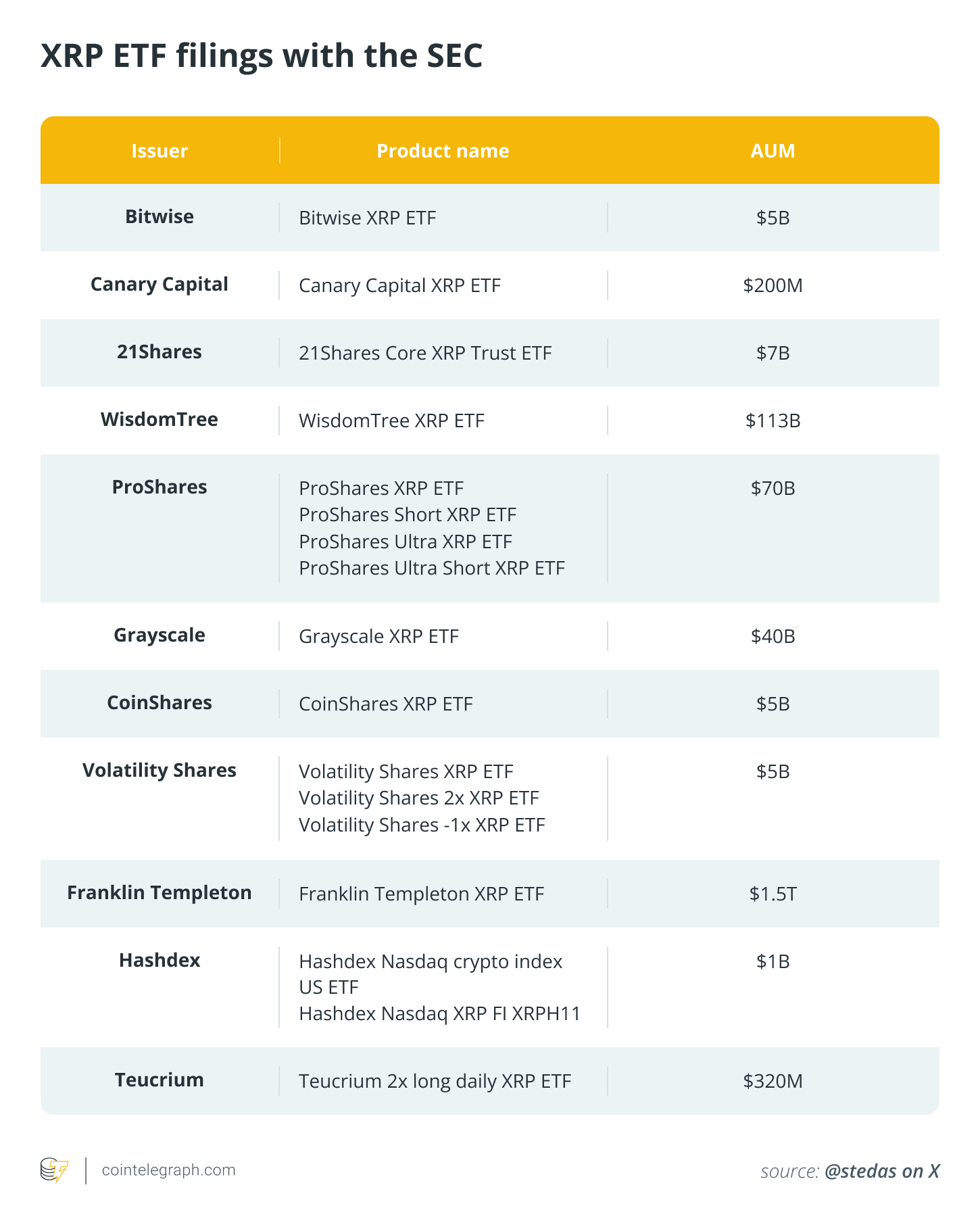
XRP Emerges as a Potential Dark Horse for Wall Street, Paralleling Bitcoin's Journey
Investigating the reasons some funds are viewing XRP as a promising investment amidst ETF applications.
ETF Filings Highlight XRP’s Coming of Age
When financial institutions launch exchange-traded funds (ETFs) for cryptocurrencies, it serves as a significant marker indicating an asset’s transition from being niche to mainstream. Bitcoin and Ether ETFs are now active in the US, attracting substantial investments from retail and institutional sources who favor the accessibility of these products without the need to actually possess the tokens.
Now, XRP, the digital currency associated with Ripple’s payment infrastructure, is under increased scrutiny.
Despite its previous battles with the US Securities and Exchange Commission that questioned its status and its lack of the cultural weight that Bitcoin and Ether hold, XRP is now seeing major asset management firms submit ETF applications. Opinions remain divided on whether investors will be receptive to XRP.
Nate Geraci from The ETF Store, who monitors ETF activities closely, feels critics might be underestimating the demand for XRP. He draws parallels between the current skepticism toward XRP and the initial resistance observed with Bitcoin and Ether ETFs, which dissipated as investment volumes surged.
XRP ETFs on the Horizon
The discussion around a potential spot XRP ETF is heating up as regulators sift through numerous crypto fund applications. Currently, the SEC is reviewing seven applications specifically for spot XRP ETFs, slightly trailing Solana’s eight proposals. Across the board, there are a total of 92 applications related to crypto.
Industry giants such as WisdomTree had their application deferred in August, while firms like 21Shares and Bitwise have filed several updates due by fall, hinting at a bustling decision period upcoming this autumn. Established firms like Grayscale and Franklin are in the mix, alongside newer players exploring innovative financial products that offer leveraged and derivative exposure to XRP.
Moreover, innovative strategies are being introduced. For example, Amplify is proposing a fund that seeks to combine XRP with covered call strategies to enhance yield prospects.
Upcoming October Decisions
Between October 18 and 25, 2025, the SEC is expected to deliver findings on six principal spot XRP ETF applications. Notable dates include:
- Grayscale (Oct. 18)
- 21Shares (Oct. 19)
- Bitwise (Oct. 20)
- Canary (Oct. 23)
- WisdomTree and CoinShares (Oct. 25)
In tandem with these applications, Ripple’s bid for a national bank charter is also on the table, which will be evaluated around the same timeframe. Successful approval would allow Ripple to function as a federally regulated banking entity, paving the way for broader services including payment and custody solutions beyond crypto.
Investor Sentiment
Despite XRP’s prospects as Wall Street’s unexpected contender, skepticism remains prevalent, particularly among large institutional players. Notably, BlackRock has explicitly stated that it is not pursuing a US spot XRP ETF due to insufficient client interest and regulatory ambiguity. This reflects a broader uncertainty about XRP’s long-term viability.
Amidst these reservations, some analysts warn that launching an XRP ETF might not yield sustained investor interest or returns. The current market fluctuations show XRP fluctuating around $2.75 to $2.88, with over $1.9 billion associated with changes in trading behavior.
Conversely, institutional wallets have garnered nearly $928 million in XRP investment, indicating a complex interplay between speculative trading and strategic engagement. As the regulatory landscape evolves, the outcomes for XRP hinge critically on the assessments in October and Ripple’s quest for a banking license. Success could elevate XRP to mainstream status, while failure might deepen existing doubts.



